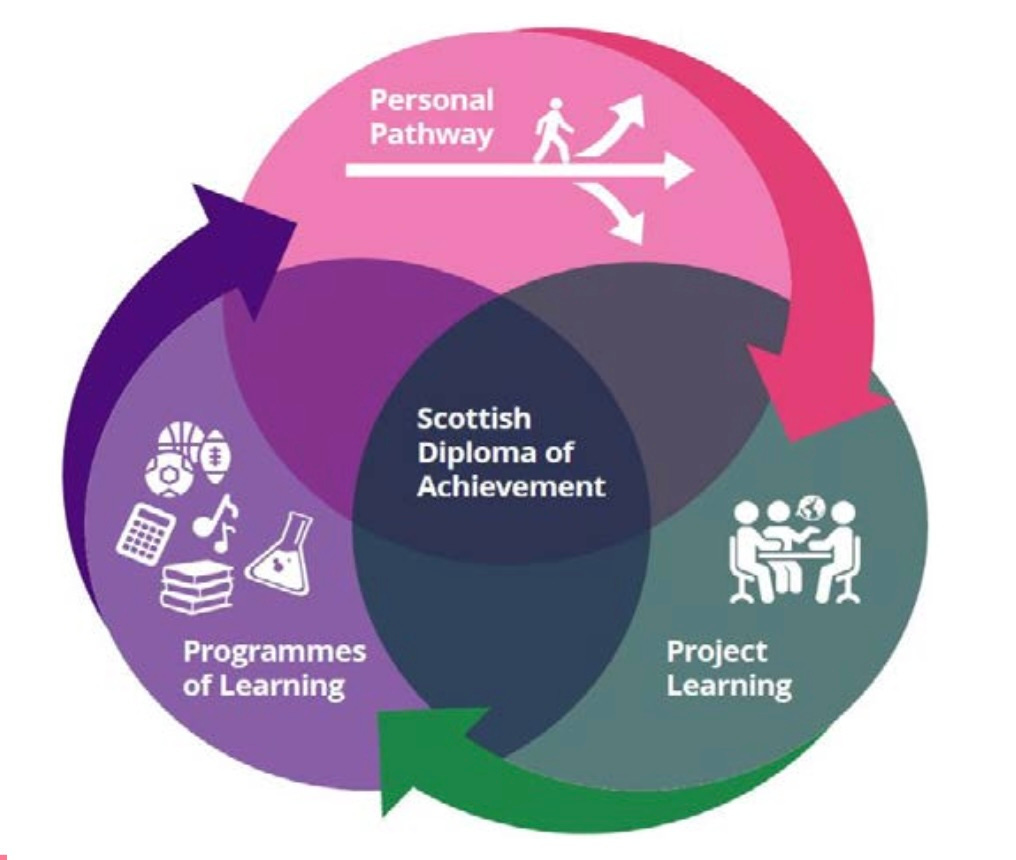Interdisciplinary Learning in the new Scottish Diploma of Achievement
concerning what interdisciplinary learning is in principle and practice
In March 2023 the Hayward “Independent Review of Qualifications” set out its recommendations for replacement of the current Senior Phase qualifications and assessment by a Scottish Diploma of Achievement (SDA). Models for the SDA have been accepted in principle, leading to the Scottish Government’s (June 2023) Report of the Independent Review of Qualifications and Assessment: It's Our Future - Independent Review of Qualifications.
This post concerns our understanding of what interdisciplinary learning (IDL) is in principle and practice.

IDL – one of the four contexts for learning of Curriculum for Excellence - is to be introduced in the third of “three overlapping elements”: (1) Programmes of Learning (previously called Subject Studies and then Subject and Learning Programmes); (2) Personal Pathways; (3) Project Learning (previously called Learning in Context and then Learning in Context/Interdisciplinary Learning). Elements (1) and (2) are based around the Senior Phase ‘subjects’ and ‘learner pathways’. Element (3) (Project Learning) has been the subject of three recent iterations (above), which differ in significant ways. The underlying reasons for these recent changes are unclear. “Interdisciplinary learning” has been removed from the title of the June 2023 version but remains within the plan.
The introduction of IDL into the qualifications requires a clear, concise and practical definition and understanding of IDL that is consistent with its wider understanding and use across the education system, for example in the Broad General Education and in higher and further education. The proposed working definition of IDL adopted for “Project Learning” in the SDA, which derives from Education Scotland’s (2020) paper: Interdisciplinary Learning: ambitious learning for an increasingly complex world is:
“Interdisciplinary learning is a planned experience that brings disciplines together in one coherent programme or project.”
This definition, while concise, lacks the necessary detail or clarity of purpose and process to convey a clear understanding of what IDL is and how it works, in principle or in practice. It fails to distinguish unambiguously how IDL differs from other ways of ‘bringing disciplines together’, for example multidisciplinary learning.
The Royal Society of Edinburgh (RSE) Education Committee adopted a clear and practical working definition at their 2019 RSE IDL Conference, in the RSE’s 2020 Advice Paper Embedding Interdisciplinary Learning in Scottish schools, which the IDL Network follows:
“IDL is a way of learning and thinking through which learners draw on knowledge and understanding from two or more disciplines in order to gain new knowledge and skills, understand issues, and explain or solve problems that extend beyond the scope of any single subject to other areas of learning.”
This working definition is consistent with - and derives from - prior definitions in the wider education literature including higher education (e.g. Chettiparamb 2007, Harvie 2012, Carroll and McGregor 2010). IDL must be grounded in disciplinary knowledge and understanding since it is the disciplines that give rigour and structure to the development and understanding of knowledge. Without the disciplinary pillars the interdisciplinary lintels will fall.
We support the suggestion that “different disciplines plan and execute as one” insofar as this implies and underlines the need to develop a culture of collaboration across subjects to enable IDL development. However, in practice this may fail to capture the rich potential of IDL. Different disciplines may often bring differing but equally valid (“real world”) perspectives on a problem or concept, perspectives that deserve to be articulated as they may enrich learners’ experiences and understandings of IDL. A shared understanding of IDL should be articulated and developed amongst teachers and educators not just around the SDA and the new qualifications but also more widely across the BGE in primary and secondary.
How can the further development and practice of IDL be better understood and supported? Exemplification provides a key practical tool. The IDL Network has been developed to support teachers and educators to develop a deeper understanding of IDL and offers links to a range of interdisciplinary resources at various levels.
Additional IDL References
Chettiparamb, A (2007) Interdisciplinarity: a literature review. The Higher Education Academy https://www.heacademy.ac.uk/knowledge-hub/interdisciplinarity-literature-review
Harvie, J (2012) Interdisciplinary education and co-operative learning: perfect shipmates to sail against the rising tide of ‘learnification’. Stirling International Journal of Postgraduate Research 1.1.
Carroll M and McGregor F (2014) Interdisciplinary Learning. In: Carroll M and McGregor F (eds) Understanding Teaching and Learning in Primary Education. pp170-190. Sage: London. International Professional Development Association.



